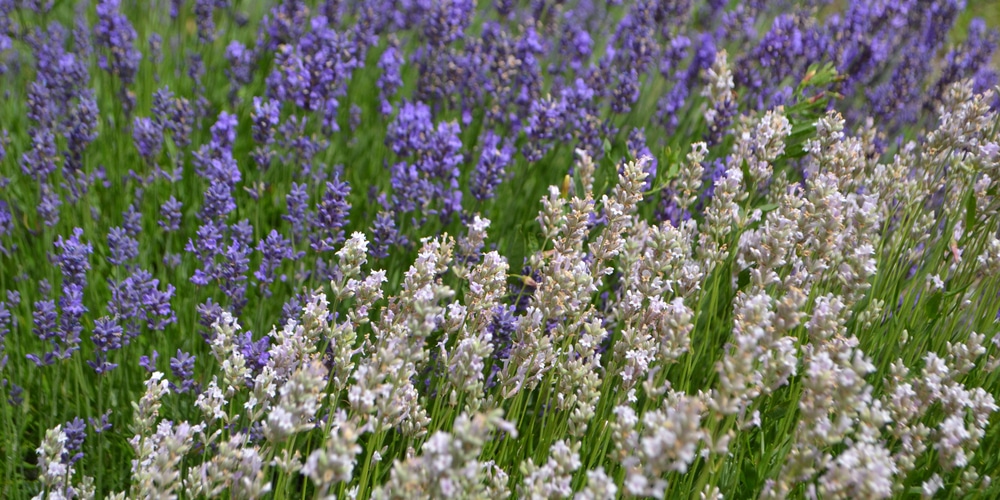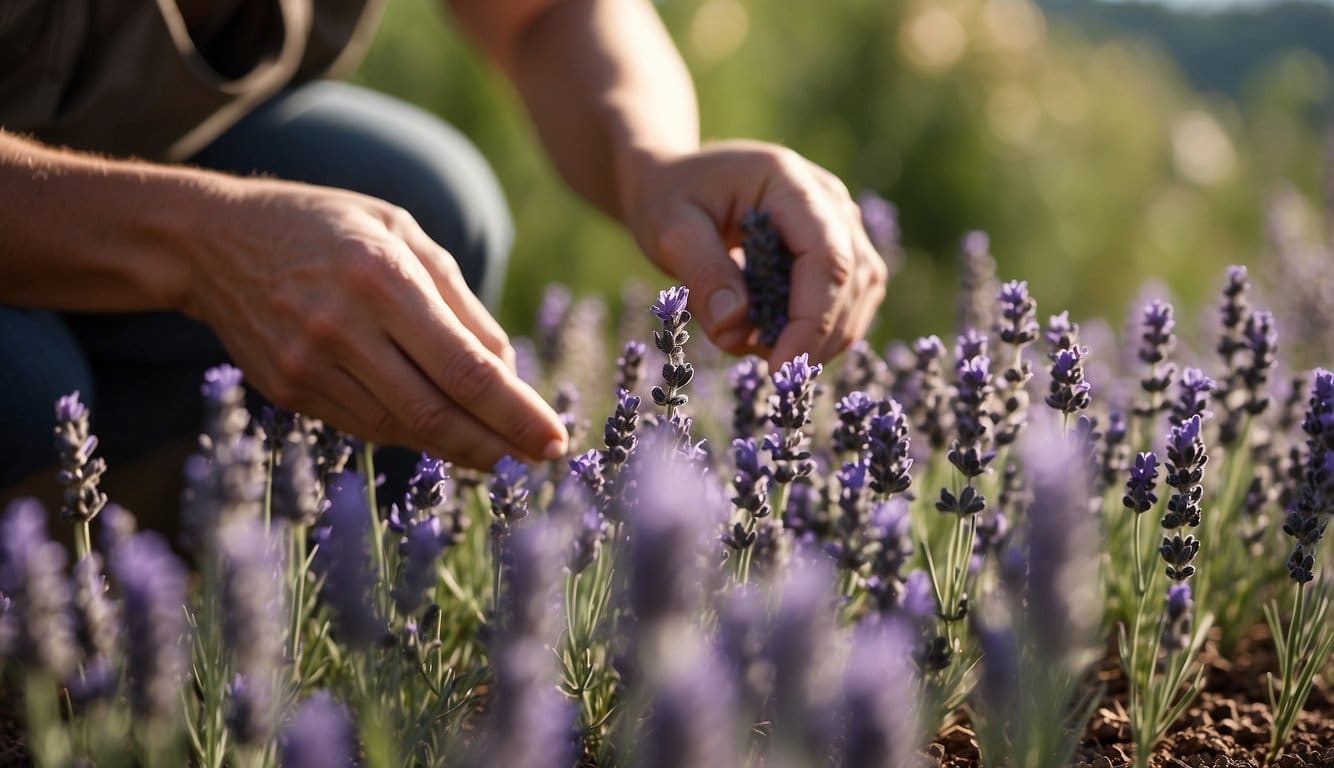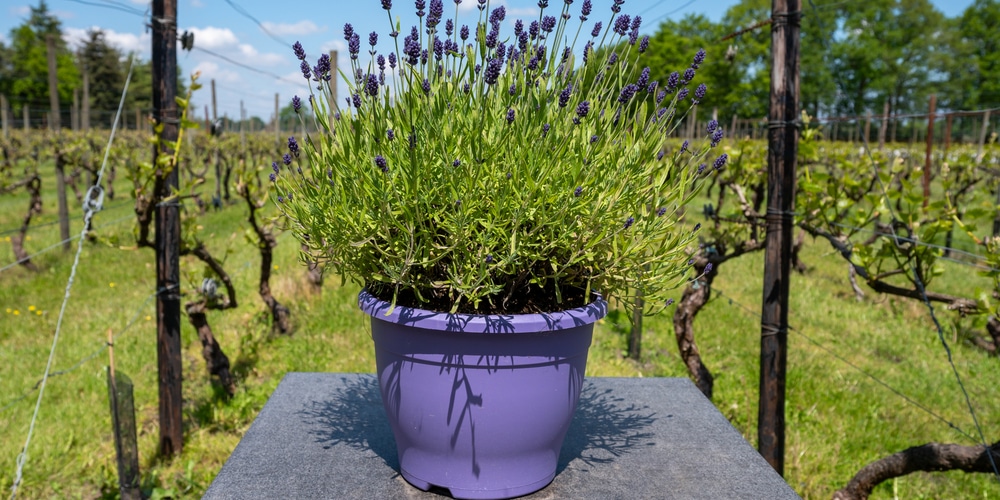Quick Answer
| Location | When to Plant Lavender Seeds |
|---|---|
| Indoors | Start 6-8 weeks before the last frost date in your area. |
| Outdoors | After the danger of frost has passed, typically in late spring to early summer. |
| Warmer Climates | Direct sow in fall for winter to early spring germination. |
Lavender seeds can be slow to germinate and require patience. They thrive in well-drained soil and full sun, making them perfect for areas with hot, dry summers.
Starting seeds indoors allows you to control conditions closely, ensuring a better germination rate. Once established, lavender plants are drought-tolerant and can produce fragrant flowers and foliage for years.
Ideal Planting Time for Lavender Seeds
When embarking on the journey of growing lavender from seeds, gardeners should note the pivotal role timing plays in the process.
Lavender seeds exhibit the highest germination rates when planted at the correct time, which varies depending on whether the seeds are sown indoors or outdoors.
Indoor Planting:
- Start Date: Gardeners should plant lavender seeds indoors 6-10 weeks before the last expected frost date.
- Temperature: Maintain a consistent temperature, ideally close to 70°F (21°C), which supports germination.
Indoor seeding ensures that seedlings are robust enough to withstand outdoor conditions upon transplanting.
Outdoor Planting:
- Season: Spring, as soon as the soil is workable and the threat of frost has passed, is the optimal season for outdoor planting.
- Soil Preparation: The soil should be well-draining with a slight acidity.
- Spacing: Plant seeds at least 6 inches apart, lightly covering them to no more than 1/8 inch deep.
- Sun Exposure: Choose a location that receives full sun for the majority of the day.
Outdoor sowing is suitable for regions with milder climates, but it requires diligent attention to weather patterns.
| Indoor Start | Outdoor Sowing | Soil Temperature |
|---|---|---|
| 6-10 weeks before last frost | Spring after last frost | Around 70°F (21°C) |
Choosing the Right Lavender Variety
When selecting the ideal lavender variety for your garden, consideration of climate, intended use, and aesthetic preferences is paramount.
Factors Influencing Lavender Variety Selection
Climate Compatibility: Lavender thrives in a specific range of climates, with most varieties preferring well-draining soil and full sun exposure.
Gardeners should choose varieties suited to their local climate to ensure robust growth. For example, Lavandula angustifolia, or English lavender, is known for its cold hardiness.
Garden Design and Purpose: The intended use significantly influences variety selection.
Some lavenders, like Lavandula x intermedia, yield higher oil content, making them ideal for essential oil production. Others are prized for their ornamental qualities or compact growth, which makes them excellent for borders or small gardens.
Bloom and Fragrance: Different varieties exhibit varying bloom times, colors, and fragrance intensities.
The iconic purple flowers are characteristic of many species, but there are also pink and white blooming varieties. The fragrance can vary from intensely aromatic to mild and sweet, thereby affecting sensory experience in the garden.
Seed Preparation and Treatment
Before sowing lavender seeds, gardeners must understand the importance of proper seed preparation to ensure successful germination. This section will explore the specific treatment process known as stratification, which is crucial for lavender seed development.
Stratification Process
Lavender seeds often require a period of cold treatment, called stratification, to simulate winter conditions and break dormancy before germination.
This process is essential as it triggers the seeds to move from a dormant state to an active growth phase.
Steps for Stratification:
- Moisten a paper towel: Dampen but do not soak.
- Place seeds on the towel: Arrange them so they are spaced evenly.
- Fold paper towel with seeds: Ensure they remain flat.
- Place in a plastic bag: Seal to retain moisture.
- Store in the refrigerator: Duration varies but commonly between 30 to 40 days.
- Check moisture level: Periodically, ensure the towel does not dry out completely.
Once the stratification period is over, the seeds should be carefully removed and sown in a suitable growing medium, placed in direct sunlight, and kept appropriately moist to encourage germination.
Typically, gardeners will see sprouts in about 7 to 14 days post stratification.
Soil and Location Requirements
For successful lavender cultivation, attention to soil composition and sunlight positioning is crucial.
Soil Composition
Ideal soil for lavender should be well-draining and slightly acidic to neutral in pH.
Gardeners should aim for a pH between 6.0 and 8.0, which can be tested with a simple soil pH testing kit.
The addition of organic matter, such as compost or aged manure, can improve soil structure and drainage, especially in areas with heavy or clay soil.
It’s also beneficial to consider:
- Texture: Loamy or sandy soil is preferable.
- Drainage: Lavender thrives in dry conditions and does not tolerate wet roots.
Sunlight and Positioning
Lavender demands full sunlight to flourish, requiring at least 6 to 8 hours of direct sunlight per day.
When selecting a site, gardeners should consider:
- Sunlight: Choose an open area that receives uninterrupted sunlight.
- Air circulation: Good airflow helps prevent fungal diseases.
Planting Techniques
The successful growth of lavender starts with understanding the nuances of seed planting.
One must strike a careful balance with depth and spacing to facilitate optimal lavender plant development.
Sowing Depth and Spacing
Sowing Depth: Lavender seeds germinate best when planted at a shallow depth. They should be sown approximately 0.5 inches deep in the soil.
This allows for enough coverage to keep the seeds moist and in darkness to encourage sprouting, without being so deep that they cannot emerge.
Spacing: Proper spacing is crucial for the healthy growth of lavender plants.
When sowing directly into the garden, seeds should be spaced at least 6 inches apart. This distance ensures that each plant has enough room to develop a strong root system and ample foliage without overcrowding.
Frequently Asked Questions
Gardeners often encounter questions about the nuances of growing lavender from seeds. This section aims to address common inquiries with precise, reliable information.
How can you increase the germination rate of lavender seeds?
To increase the germination rate, one can stratify lavender seeds by refrigerating them on moist paper towels inside a plastic bag for 30 to 40 days before planting.
Ensure the seeds are kept in a warm location after sowing to encourage germination.
What is the optimal period for planting lavender seeds indoors?
The ideal time to plant lavender seeds indoors is 6 to 10 weeks before the last frost date in spring.
This allows ample time for germination and strong seedling development before transplanting outdoors.
Are there specific techniques for planting lavender in containers?
When planting lavender in containers, use a light, seed-specific potting mix and ensure the container has good drainage.
Gently cover each seed with a thin layer of soil without sowing them too deeply.
What is the ideal climate zone for outdoor lavender seed planting?
Lavender seeds thrive best in outdoor climate zones 5 through 9, where they can be planted in well-draining, slightly acidic soil in a sunny spot after the danger of frost has passed.
What are the challenges associated with growing lavender from seeds?
The challenges include lavender’s slow germination rate and their preference for specific growing conditions such as full sun and well-draining soil, which make them more challenging for novice gardeners.
How deep should lavender seeds be sown in the soil?
Lavender seeds should be sown about half an inch deep into the soil. Proper sowing depth is crucial to ensure the seeds have adequate coverage without being too deep to prevent germination.
Last update on 2025-04-21 / Affiliate links / Images from Amazon Product Advertising API







